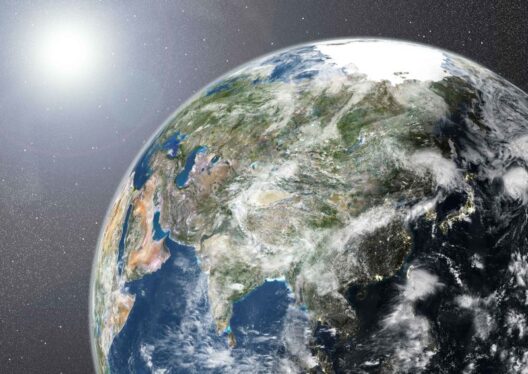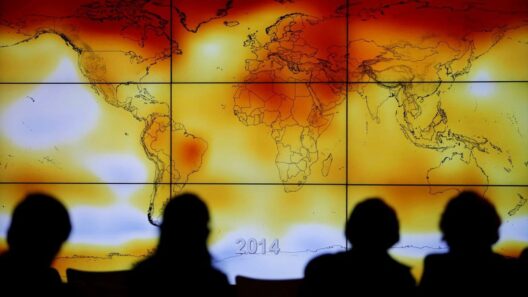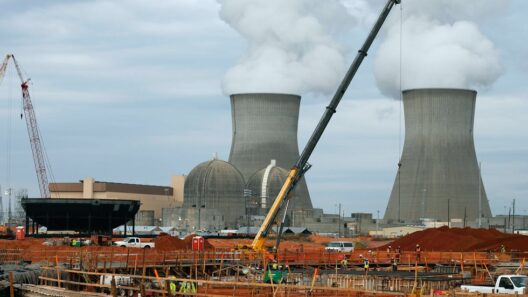As we traverse the remarkable landscapes of our planet, it becomes increasingly apparent that the weather is undergoing an unprecedented transformation. The phenomena of violent storms, searing heat, and frigid blasts are manifestations of a broader, more insidious narrative—the gripping impact of global warming. This narrative not only urges a shift in our perspective on natural phenomena but beckons us to explore the underlying causes and consequences of these meteorological extremes.
First, it is crucial to understand the mechanisms driving climate change. The Earth’s climate is, in essence, a delicate equilibrium influenced by various factors, including solar radiation, atmospheric composition, and oceanic currents. Human activities, predominantly the burning of fossil fuels and deforestation, have exacerbated the buildup of greenhouse gases in the atmosphere. Carbon dioxide (CO₂) and methane (CH₄) trap heat, disrupting this balance and leading to a gradual rise in global temperatures.
As global temperatures ascend, the consequences manifest in increasingly erratic weather patterns. This is not a mere fluctuation; rather, it is a recalibration of climate norms. Weather systems that once adhered to predictable cycles have turned capricious. The results are catastrophic and diverse, from intensified hurricanes to prolonged droughts that sweep across vast regions. The current trajectory of our climate suggests that we are merely skimming the surface of these changes.
In particular, the interplay between warmth and moisture illuminates the phenomenon of more potent storms. Warmer air can hold more moisture, which in turn fuels the development of heavier rainfall and severe storms. This interplay was painfully illustrated during recent natural disasters, where communities faced unprecedented flooding due to atmospheric rivers—a term denoting the concentrated flow of moisture in the atmosphere. These events challenge infrastructure and emergency response systems, revealing the vulnerabilities of human society in the face of nature’s wrath.
Moreover, the tension between changing temperatures and storm frequency is palpable. Data indicates that while the number of tropical storms may remain constant, the intensity is on an upward trend. Meteorological models predict that storms classified as Category 4 or 5 on the Saffir-Simpson Hurricane Wind Scale are becoming more frequent and severe. These storms, characterized by winds exceeding 130 miles per hour, induce catastrophic damage, leaving a wake of destruction in coastal communities.
Shifting focus to cold weather phenomena, global warming paradoxically brings about more extreme cold snaps in some regions. When the polar vortex experiences disturbances, it can allow frigid air to sweep southward into temperate zones. These instances are not isolated; they illustrate the complex dynamics of climate systems. As global averages rise, the turbulence produces not only heat waves but also severe cold spells, culminating in a rollercoaster of climatic extremes. Such fluctuations disrupt ecosystems and propagate confusion in the natural world.
The socio-economic ramifications of these tumultuous weather patterns are increasingly conspicuous. Agriculture has become an epicenter of concern as rising temperatures and unpredictable precipitation patterns alter growing cycles. Crop yields fluctuate dramatically, threatening food security and undermining rural economies. Regions that once thrived on agriculture may find their viability challenged by droughts or floods, sending ripples through local and global markets alike.
The implications extend far beyond agriculture. Public health emerges as a paramount issue; as temperatures rise, so too does the prevalence of heat-related illnesses and vector-borne diseases, with mosquitoes and ticks thriving in warmer climates. Cities, densely populated and often ill-equipped for heat resilience, face a mounting challenge. Urban heat islands exacerbate health risks, particularly for vulnerable populations, revealing the inextricable link between weather, climate, and human well-being.
To confront these complex challenges, innovation must become a cornerstone of our response to climate change. Sustainable practices, renewable energy, and adaptive infrastructure are paramount. Communities must pivot towards resilience—investing in green infrastructure, enhancing drainage systems, and implementing agricultural techniques that respect and preserve the earth. By fostering a culture of sustainability, we can begin to mitigate some of the worsening impacts of erratic weather.
Education plays a critical role in this transformation. A profound understanding of climate science equips individuals and communities to advocate for policies that prioritize environmental stewardship. Engaging youth in discussions about climate resilience and adaptation cultivates a generation of informed citizens prepared to address these challenges head-on. Knowledge serves as a beacon, illuminating paths forward in the fight against climate change.
Ultimately, as we witness the change in the character of our weather, we are called to acknowledge our role in this narrative. Global warming’s grasp on storms and temperatures is a stark reminder of the interconnectedness of our actions and the environment. Our choices resonate through time, shaping the fabric of our ecological reality. By embracing innovative solutions and fostering an ethos of sustainability, we can cultivate a more harmonious relationship with the Earth and its myriad weather phenomena.
In conclusion, the weather’s wild ride is emblematic of the urgent need to confront climate change. As the planet warms, our relationship with nature must evolve. The anomalies we now observe prompt critical reflection, encouraging curiosity and demanding our commitment to a sustainable future. Through understanding and action, we can navigate this turbulent weather, steering humanity towards a more resilient tomorrow.






